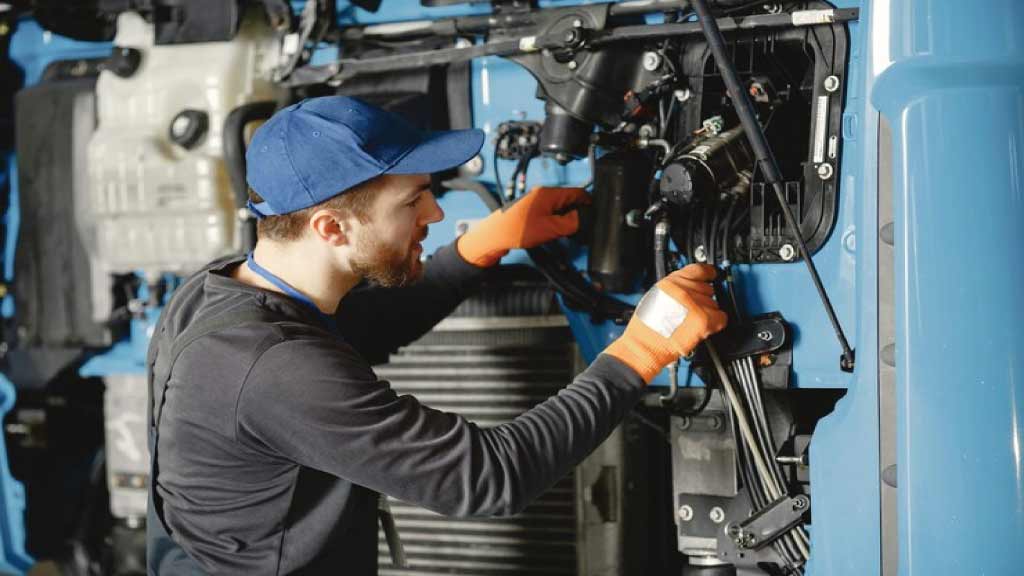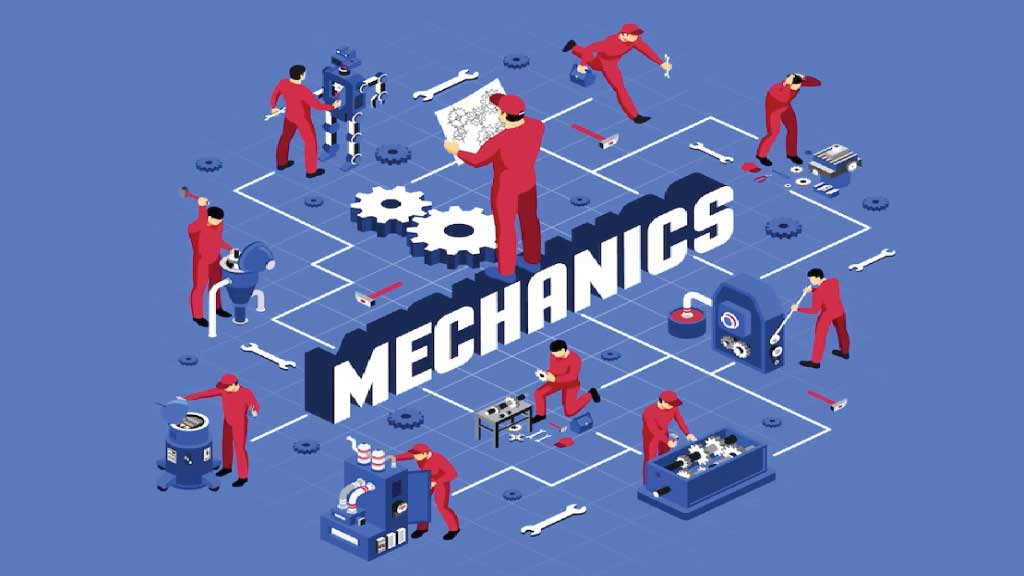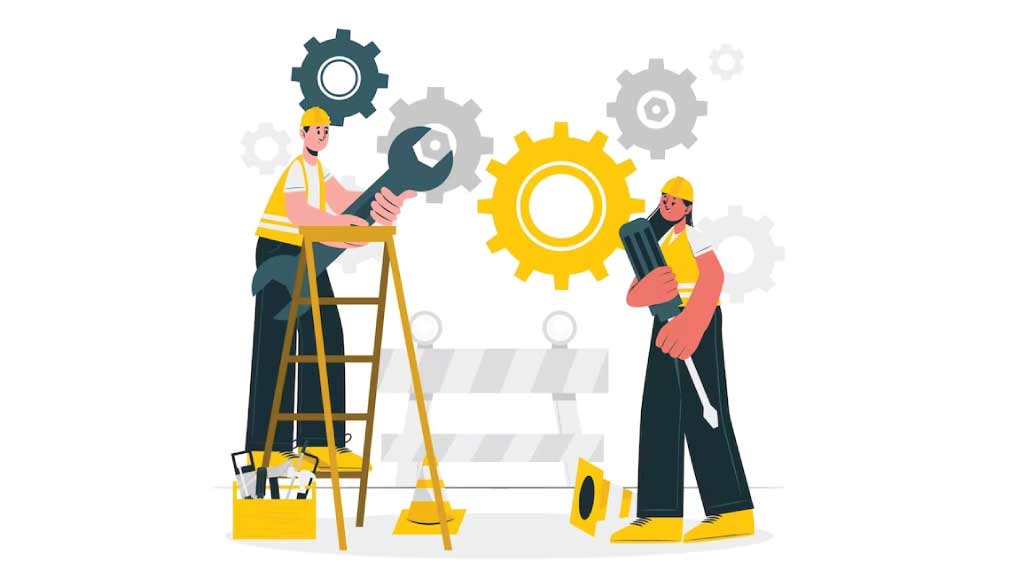By adhering to a structured PM schedule, organizations can curtail the incidence of unexpected breakdowns and mitigate associated downtime, consequently bolstering productivity and operational efficiency. Moreover, PM fosters the optimization of equipment performance by ensuring that machinery operates at peak condition, thereby maximizing output and prolonging the operational lifespan of assets.
In essence, the implementation of preventive maintenance not only serves as a cost effective strategy for minimizing disruptions but also underscores a commitment to proactive asset management, safeguarding long-term viability and competitiveness in industrial settings.
Predictive Maintenance (PdM):
Predictive maintenance (PdM) constitutes a cutting edge methodology hinged upon data analysis and real time monitoring to prognosticate the likelihood of equipment failure. This innovative approach harnesses the power of advanced sensors, comprehensive data collection, and sophisticated analytics to discern subtle alterations in machine behavior or performance. By leveraging these insights, PdM facilitates the early detection of potential issues, enabling maintenance interventions to be precisely scheduled at optimal junctures.
Consequently, this preemptive strategy minimizes unplanned downtime, averting costly disruptions to operations, and safeguarding productivity. Moreover, by preemptively addressing emerging issues before they escalate into significant malfunctions, PdM serves to maximize the operational efficiency and longevity of machinery.
Thus, the adoption of predictive maintenance not only exemplifies a forward-thinking approach to asset management but also underscores a commitment to operational excellence and competitiveness in modern industrial landscapes.
Corrective Maintenance:
Corrective maintenance, often referred to as reactive maintenance, is a critical strategy employed to rectify unforeseen issues that arise unexpectedly within mechanical systems. This approach is swiftly initiated when equipment experiences failure or malfunctions, with the primary objective being the rapid restoration of functionality. While indispensable in certain circumstances, an overreliance on corrective maintenance can prove to be financially burdensome due to the associated costs of unplanned downtime and emergency repairs.
Despite its inherent necessity, organizations are encouraged to adopt a balanced maintenance strategy that integrates proactive measures to mitigate the frequency and severity of corrective interventions. By implementing preventative and predictive maintenance practices alongside reactive measures, businesses can minimize disruptions, optimize operational efficiency, and ultimately enhance the overall reliability and longevity of their equipment assets.
Therefore, while corrective maintenance remains a crucial aspect of maintenance management, its efficacy is augmented when complemented by comprehensive preventative strategies.
Condition Based Maintenance (CBM):
Condition-based maintenance (CBM) is a sophisticated strategy centered around the continuous monitoring of select parameters, including temperature, vibration, and fluid levels, to ascertain the operational health of equipment. Through meticulous analysis of these indicators, maintenance interventions are judiciously scheduled, ensuring that resources are allocated precisely when needed.
This targeted approach not only minimizes the likelihood of unexpected failures but also mitigates the risk of unnecessary servicing, thereby optimizing operational efficiency and cost effectiveness. By harnessing real time data and advanced monitoring technologies, CBM empowers organizations to proactively address potential issues before they escalate, fostering a culture of predictive maintenance and operational resilience.
Embracing CBM as part of a holistic maintenance strategy enables businesses to enhance equipment reliability, maximize uptime, and streamline maintenance operations, ultimately driving productivity and bolstering competitiveness in dynamic industrial landscapes.
Understanding Mechanical Design is crucial for creating efficient and functional machines, while What Is Industrial Design focuses on the aesthetics and user experience of products. Please read our detailed and easy, ultimate guide on these topics to see how design principles shape both function and form. Discover more in the full post!
Techniques of Mechanical Maintenance:
Routine Inspections:
Lubrication:
Cleaning and Debris Removal:
Tightening and Alignment:
Component Replacement:
Over time, wear and degradation are inevitable for components like belts, hoses, filters, and seals within mechanical systems. Timely replacement of these parts, adhering to manufacturer recommendations, is paramount to forestall unforeseen failures and minimize downtime. By proactively replacing worn-out components before they reach critical failure points, the risk of unexpected disruptions to operations is mitigated, ensuring uninterrupted productivity.
Following manufacturer guidelines for replacement intervals not only maximizes equipment reliability but also optimizes performance and efficiency. Investing in timely replacements underscores a commitment to proactive maintenance practices, safeguarding against costly breakdowns and preserving the operational integrity of machinery.
In essence, prioritizing the timely replacement of worn components is essential for sustaining the long-term reliability and functionality of industrial equipment.
Calibration and Adjustment:
Calibration stands as a pivotal process to uphold the precision and accuracy of equipment within specified tolerances. Regular calibration of sensors, gauges, and control systems is indispensable for maintaining reliability and precision in industrial settings. By periodically verifying and adjusting the output of measurement instruments to match known standards, potential inaccuracies and deviations are identified and rectified promptly.
This meticulous calibration regimen ensures that equipment operates with utmost accuracy, mitigating the risk of errors and discrepancies in critical processes. Embracing routine calibration practices not only safeguards against inaccuracies but also instills confidence in the reliability of measurement data.
Ultimately, prioritizing regular calibration underscores a commitment to quality assurance and precision in industrial operations, bolstering overall efficiency and ensuring compliance with regulatory standards.
Training and Skill Development:
Investing in comprehensive training programs for maintenance personnel is crucial for keeping abreast of advancements in technologies, techniques, and industry best practices. Well trained staff equipped with the latest knowledge and skills can execute maintenance tasks with heightened efficiency and effectiveness.
By honing their expertise through ongoing education and training initiatives, maintenance professionals are empowered to tackle complex challenges with confidence, thereby enhancing operational excellence across the board. Additionally, a skilled workforce is better equipped to adapt to evolving equipment specifications and operational requirements, ensuring seamless maintenance operations even in dynamic industrial environments.
Ultimately, prioritizing training and skill development underscores a commitment to continuous improvement and ensures that maintenance teams remain capable of delivering top tier performance in maintaining machinery and equipment.
Conclusion:
In conclusion, the effective maintenance of mechanical systems relies on a multifaceted approach encompassing preventive, predictive, corrective, and condition based strategies. By prioritizing regular inspections, proper lubrication, cleanliness, tightening, component replacement, calibration, and investing in training, organizations can optimize equipment reliability, minimize downtime, and maximize operational efficiency.
Embracing these maintenance principles fosters a culture of proactive asset management, safeguarding against unexpected failures and preserving the longevity of industrial machinery. Ultimately, a well maintained infrastructure not only enhances productivity and profitability but also ensures a safe and reliable operational environment for businesses to thrive in.
FAQs about Mechanical Maintenance:
What is preventive maintenance and why it is important?
Preventive maintenance involves scheduled inspections and repairs to prevent any equipment breakdowns. It’s vital for minimizing downtime, extending equipment lifespan, and optimizing performance by addressing issues before they escalate.
How does predictive maintenance differ from preventive maintenance?
Predictive maintenance uses data analysis to predict equipment failures based on indicators like temperature and vibration, allowing for proactive interventions. Unlike preventive maintenance, which operates on a fixed schedule, predictive maintenance relies on real time monitoring and analytics.
What are the benefits of condition-based maintenance?
Condition-based maintenance monitors equipment health in real time, triggering maintenance activities only when necessary. This approach optimizes resource allocation, reduces unnecessary servicing, and minimizes downtime by addressing issues precisely when they arise.
Why is proper lubrication essential in mechanical maintenance?
Proper lubrication reduces friction, prevents wear, and ensures smooth operation of moving parts. Following manufacturer recommended lubrication schedules extends equipment life and improves efficiency by minimizing the risk of premature failure and costly repairs.
How often should equipment be calibrated?
Equipment calibration frequency varies based on usage and manufacturer recommendations. Generally, regular calibration of sensors, gauges, and control systems ensures reliability and precision, maintaining accuracy within specified tolerances for optimal performance and compliance with industry standards.
Images ‘Designed by Freepik‘



